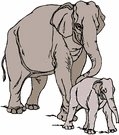
Worksheets and No Prep Teaching Resources
Reading Comprehension Worksheets
Animal Themes
Reptiles

Animal Themes
 Worksheets and No Prep Teaching Resources Reading Comprehension Worksheets Animal Themes Reptiles |
 Animal Themes |
| edHelper's suggested reading level: | grades 6 to 8 | |
| Flesch-Kincaid grade level: | 7.21 |
| Slow Worms |

|
 1 Slow worms (or slowworms) are animals that can cause a lot of confusion. They have long, cylindrical bodies and burrowing habits that remind us of earthworms. But, their scaly outfits clearly indicate that they are not worms. Rather, they are reptiles, a group of animals that include turtles, snakes, lizards, tuataras, and crocodilians.
1 Slow worms (or slowworms) are animals that can cause a lot of confusion. They have long, cylindrical bodies and burrowing habits that remind us of earthworms. But, their scaly outfits clearly indicate that they are not worms. Rather, they are reptiles, a group of animals that include turtles, snakes, lizards, tuataras, and crocodilians. |
Create Weekly Reading Books
Prepare for an entire week at once! |
| Leave your feedback on Slow Worms (use this link if you found an error in the story) |
 |
Animal Themes
|
 |
Reptiles
|
|
|